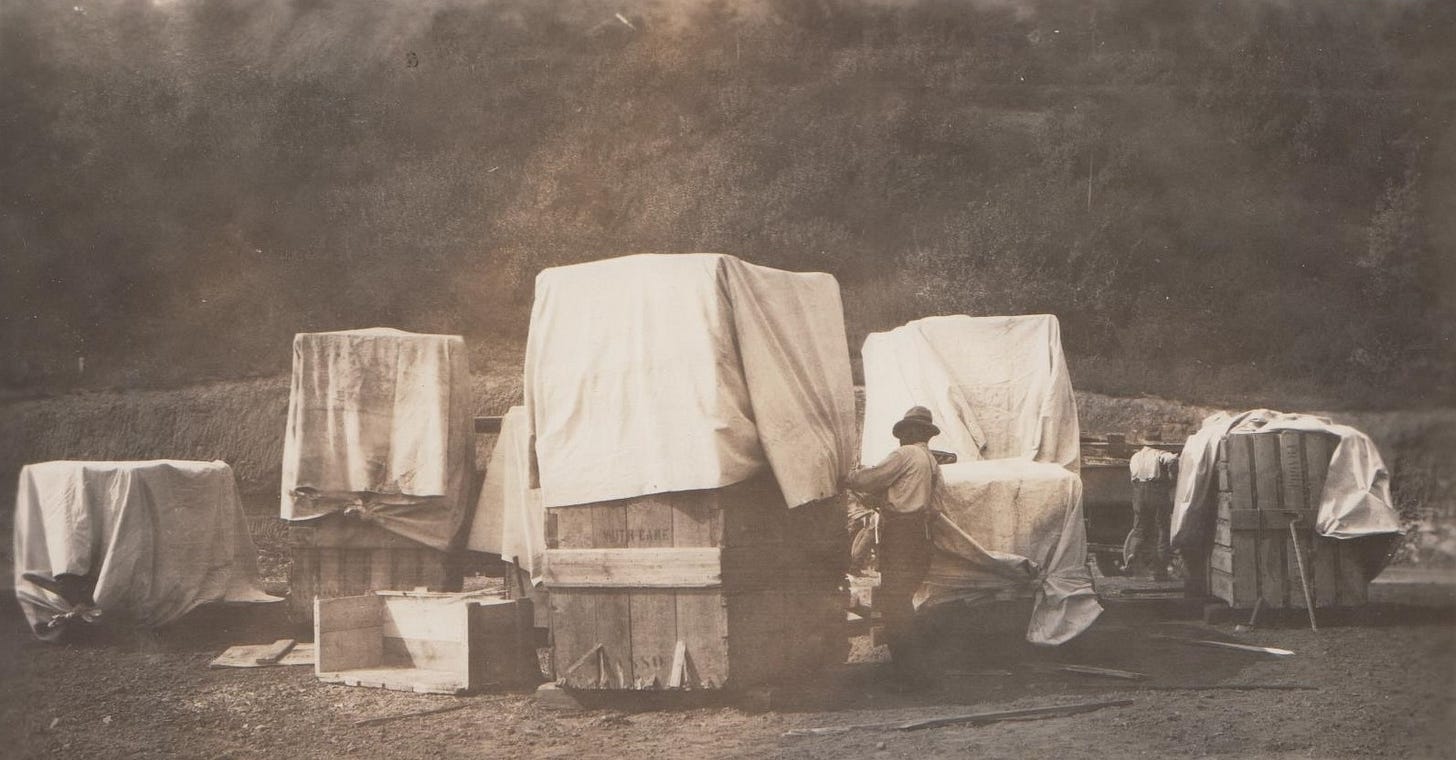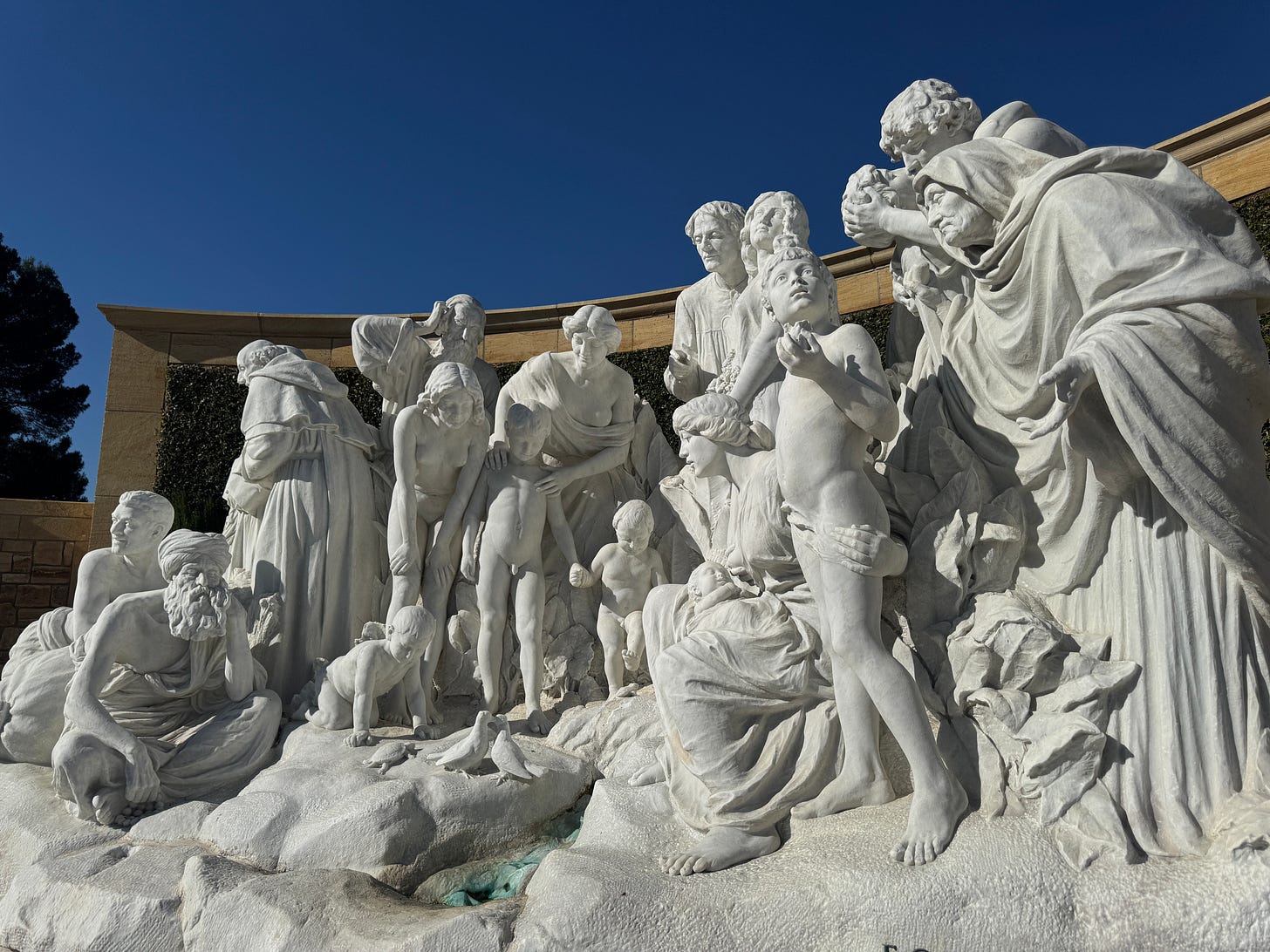Do you want to discover The Mystery of Life? It’s really not that difficult. Just head to Forest Lawn-Glendale, drive to the top of the hill, and look for the aptly named “Garden of the Mystery of Life” (fig. 1). To be clear, I’m referring to a sculpture, not the ultimate truth about human existence. Completed in 1926, The Mystery of Life features 18 life-sized figures carved in marble by Italian sculptor Ernesto Gazzeri (1866-1965). Originally from Modena, Gazzeri spent much of his career in Rome working in a style that evoked the city’s ancient, Renaissance, and Baroque monuments.
The sculpture is shown here shortly after its arrival in Glendale (fig. 2). Still in shipping crates, the artwork was carved from several blocks of stone. It was dedicated during an elaborate ceremony in June 1928 that was co-sponsored by Forest Lawn and the California Federation of Women’s Clubs.
Located next to the Court of David, The Mystery of Life is displayed in a walled garden that feels like a secret, but it’s not. The tranquil space is free to visit and open daily. It’s a great place to escape the noise and excitement of Los Angeles. The sculpture is the focal point of the garden, with the San Gabriel mountains in the distance.
While Forest Lawn features many replicas of centuries-old European sculptures, The Mystery of Life is an original. The artwork comes with a visual key to help decode the 18 figures (fig. 3). These include a boy holding an egg from which a hatchling has emerged, a philosopher scratching his head and puzzled by all that he ponders, and a pair of young lovers who believe they have found the answer in their first kiss (fig. 4).
The artwork is more than a “code” to be deciphered. Instead, viewers are confronted with a visual manifestation of the human experience, which evokes a general sense of awe and wonder. The Mystery of Life portrays a range of subjects: infants and the elderly, wise and confused individuals, as well as stoic and astonished facial expressions (fig. 5). What’s more, a literal stream flows through the fountain. It symbolizes the waters of life as it moves from an unseen source to an unknown destination.
Gazzeri’s sculpture is ambitious. Its aim is so lofty that it didn’t escape a gentle ribbing in Evelyn Waugh’s The Loved One: An Anglo-American Tragedy (1948). The novella lampoons the funeral industry, and in particular it pokes fun at Forest Lawn. The book features a sculpture called The Enigma of Existence, which is Waugh’s humous take on The Mystery of Life. But as the saying goes, imitation is the greatest form of flattery.
The next time you find yourself in Glendale, take a moment to step away from your everyday routine so you can ponder The Mystery of Life.









James, this is beautifully-written and your description of The Mystery of Life sculpture brings all characters to "life" - the stone aspect disappears! Didn't realize there's a stream or river in the artwork. Looking forward to coming up close to see all details. Thank you!